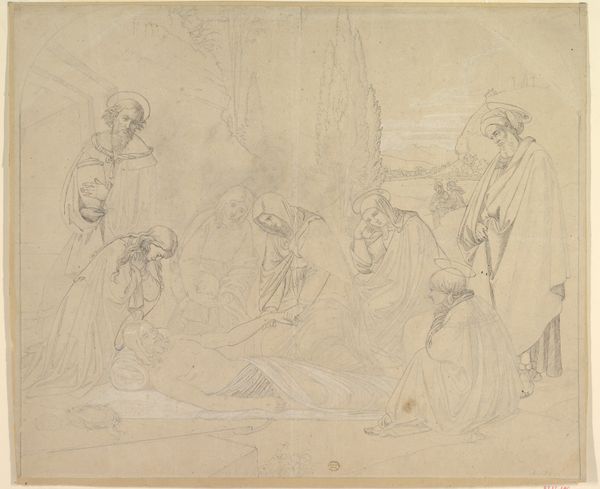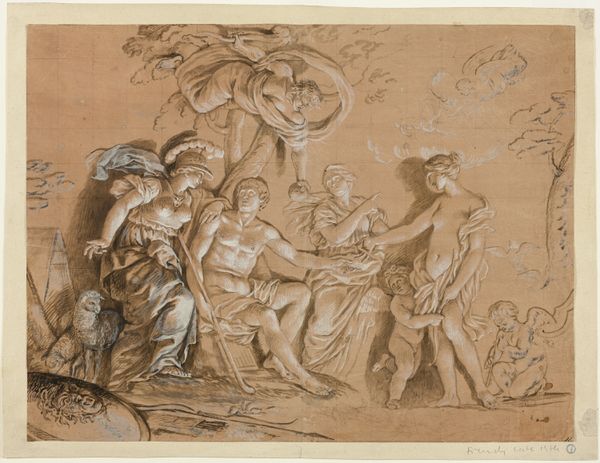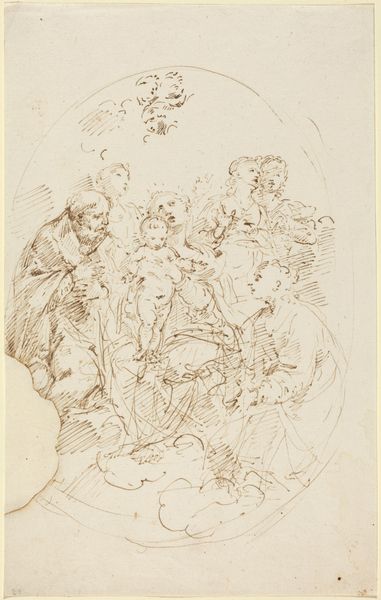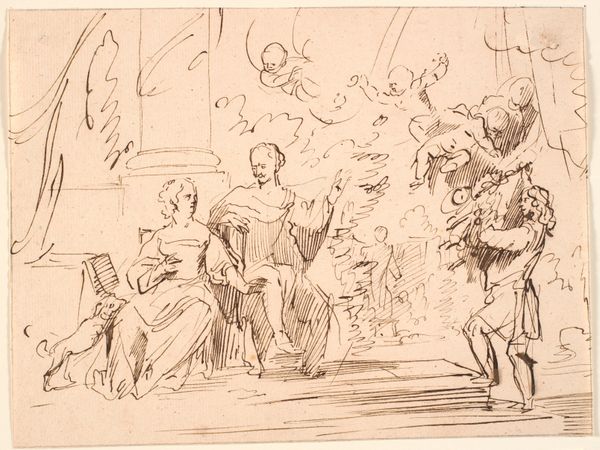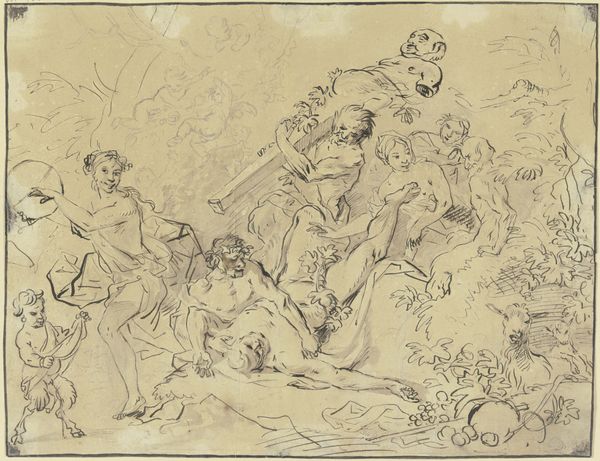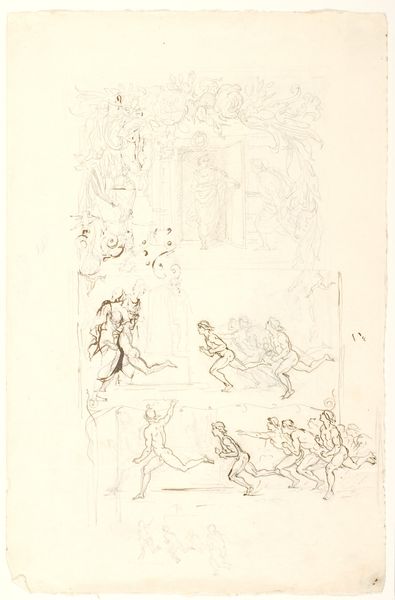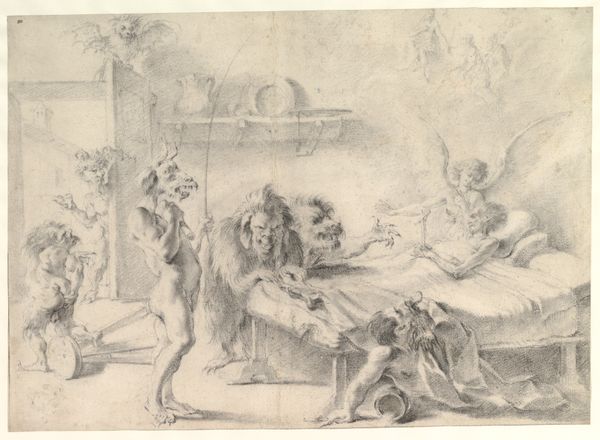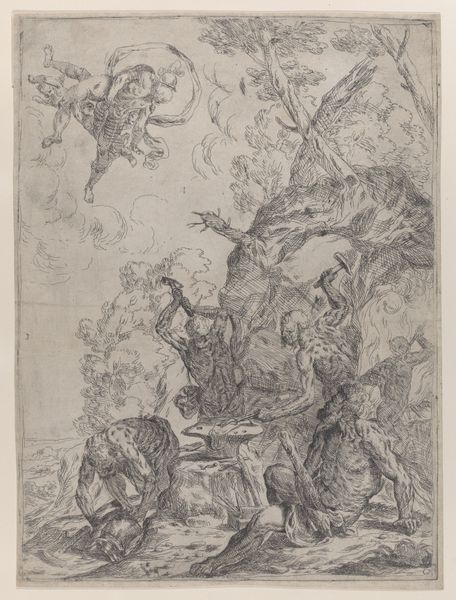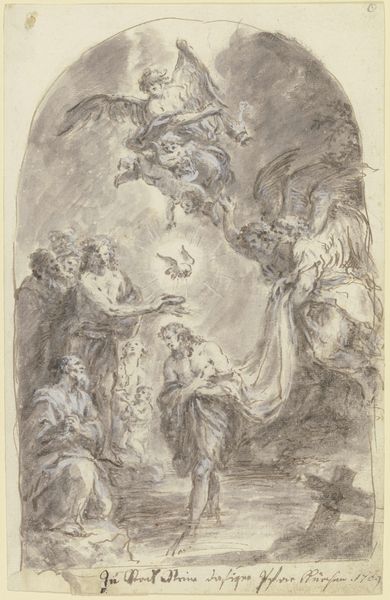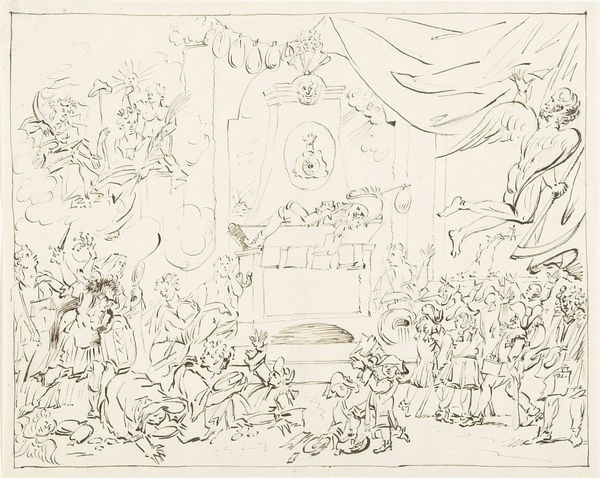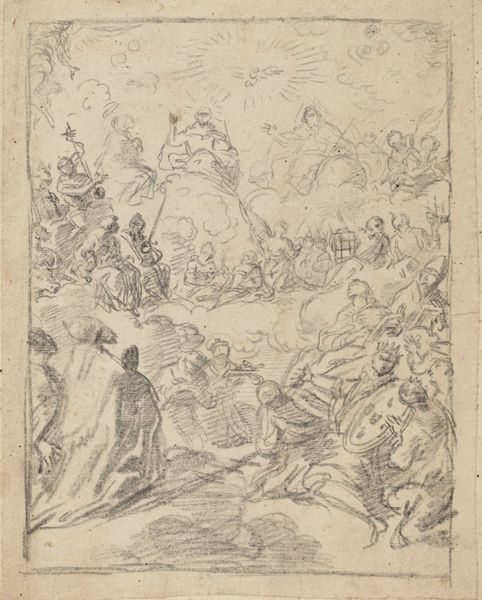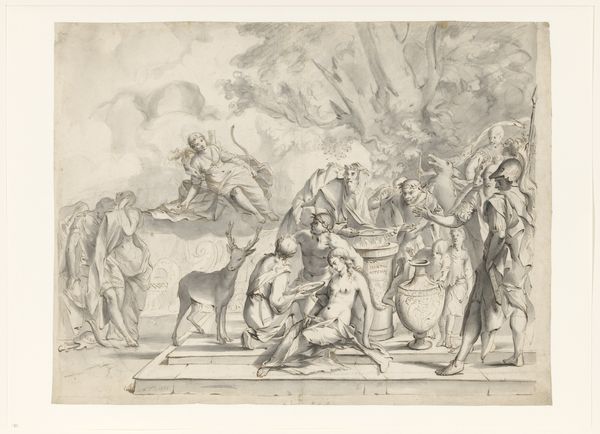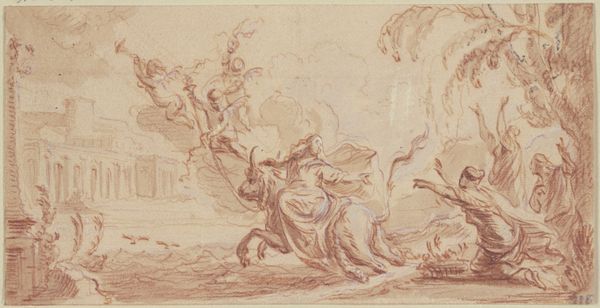
drawing, ink, chalk, pen
#
drawing
#
baroque
#
pen sketch
#
pencil sketch
#
figuration
#
ink
#
chalk
#
pen
#
history-painting
#
rococo
Copyright: Public Domain
Curator: Here we have a striking sketch entitled "The Last Supper with Two Adoring Angels." It's attributed to Giovanni Battista Tiepolo. He worked with chalk, pen, and ink. Editor: It has a spectral, dreamlike quality. Figures emerge from the light like apparitions. The overall effect, though, is serene rather than frightening, which strikes me as curious for this particular scene. Curator: Consider Tiepolo’s artistic inheritance. His style belongs to the Venetian Rococo. Rococo style often veered toward decorative uses of complex figurative arrangements for noble and religious narratives. So, this may reflect more of an idealized heavenly scene. Editor: Still, you'd expect to find tension in a portrayal of the Last Supper, especially if seen within the history of suffering in the lives of so many people, not just then but across time. Yet these figures seem suspended, removed from reality. Are we looking at detachment here? Or reverence? Curator: I lean toward reverence, influenced by baroque conventions. The swirling compositions with dramatically posed angels, their upward gaze, all contribute to that feeling. Also, remember, it’s likely a preparatory sketch, where capturing the emotional charge might not yet be a primary focus, and instead, proportion and arrangement took precedence. The final artwork may well convey heightened drama. Editor: That’s true, this work could serve to examine some tension between sketches and finalized, ‘official’ versions. Does some spontaneity get lost between versions? Were individual gestures edited according to contemporary expectations? I see this as a moment in history where people used faith and artistic tradition to make sense of human suffering. Curator: I agree. The function of visual motifs played a huge part. Consider the widespread and sustained impact of a scene like the Last Supper as a way to manage fear. And look here—Tiepolo employed well-established iconographic elements to amplify the effect. Even in its incomplete state, you get a sense of the artwork's role in communicating, preserving, and shaping the social and spiritual outlook. Editor: Well, looking at it now, the artwork prompts questions about faith, historical artistic practice, and the complex emotional power of symbols. Curator: And I'm left wondering about how it may have affected the emotions and thoughts of people throughout history who were dealing with very difficult political and historical events.
Comments
No comments
Be the first to comment and join the conversation on the ultimate creative platform.
